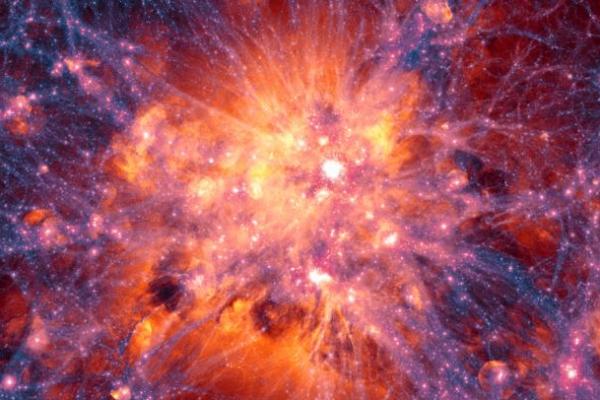“We found the missing baryons,” researcher Michael Shull said.
Until now, scientists had only found roughly two-thirds of the cosmos’ ordinary matter. But astronomers have solved the so-called “missing baryon problem,” locating the last reservoir of missing ordinary matter.
Scientists found the missing matter in the form of oxygen gas. The gas filaments were found in intergalactic space, registering temperatures of around 1 million degrees Celsius.
Astronomers found the elusive matter with the help of the radiation from a distant quasar, a super luminous black hole.
As scientists worked out the chemistry of the Big Bang, they were able to estimate the amount of ordinary matter in the universe — the matter you can see. Over the last few decades, scientists found 10 percent of the ordinary locked up inside galaxies and roughly 60 percent in intergalactic clouds of diffuse gas.
Researchers hypothesized the missing matter existed in a web-like pattern called the warm-hot intergalactic medium. Directly measuring the web of missing baryons is complicated by its relatively cool temperature.
“This is where nature has become very perverse,” Michael Shull, scientist at the University of Colorado, said in a news release. “This intergalactic medium contains filaments of gas at temperatures from a few thousand degrees to a few million degrees.”
Because much of the web doesn’t absorb much energy, and is far away from direct sources of radiation, it’s extremely faint.
To locate the missing matter, researchers recruited the assistance of a quasar called 1ES 1553. The supermassive black hole is found at the center of a distant galaxy. As a result of the steady supply of gas being pulled into its accretion disk, the black hole spits out intense beams of radiation.
“It’s basically a really bright lighthouse out in space,” Shull said.
By studying the behavior of the quasar beams as they passed through intergalactic space, scientists got a sense of where these missing baryons might be located. Next, the researchers pointed the European Space Agency’s XMM-Newton satellite in the direction of the elusive baryons.
The XMM-Newton observations revealed the spectral signature of highly ionized oxygen gas. When scientists extrapolated the density of the gas across the entire universe, they were able to account for the cosmos’ missing ordinary matter.
Researchers detailed their discovery this week in the journal Nature.
One question the new research fails to answer is how the webs of oxygen ended up so far away from the rest of universe’s ordinary matter. It’s a question scientists hope to answer in the future.
“How does it get from the stars and the galaxies all the way out here into intergalactic space?” said Charles Danforth, a research associate at Colorado. “There’s some sort of ecology going on between the two regions, and the details of that are poorly understood.”
Source: UPI.com

































Leave a Comment
You must be logged in to post a comment.